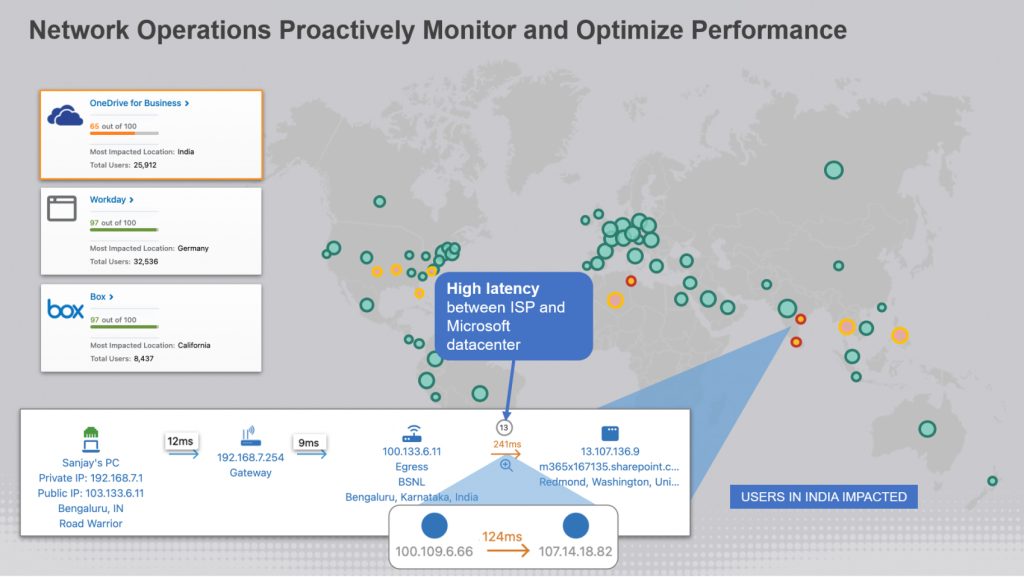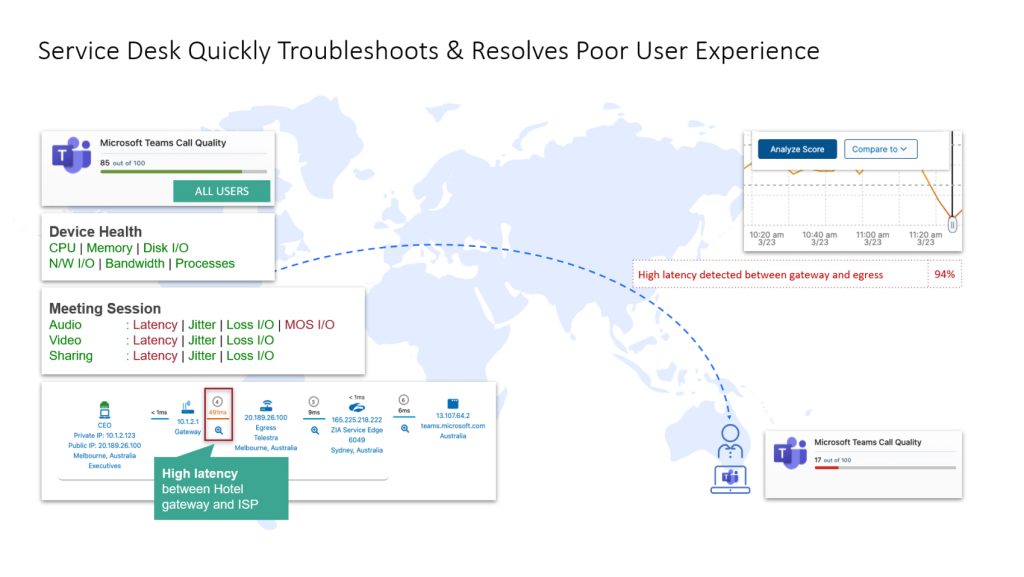The no-go mindset proposed by zero-trust security architecture assumes every entity trying to access applications or data is suspect. It enforces policies that require users to establish identity and intent before gaining access. While this helps enterprises bolster their security posture, it can lead to friction for the end user if policies are not seamlessly orchestrated.
Most Chief Information Security Officers (CISOs) are compelled to justify the steps they take to safeguard an enterprise against the impact these could have on end-user experience. As cybersecurity risks escalate, the notion that bad actors are out there, trying to gain access to information ‘in here’ does not hold anymore. Reports suggest that 74% of cyberattacks in 2023 can be traced back to human error, which refers to employees either falling prey to bad actors or intentionally doing something they should not, which exposes critical data.
When everyone is suspect, how do enterprises ensure they do not lose out on the productivity of legitimate users by having them move through the necessary loops required for a robust security posture?
Digital Experience Monitoring: Putting Legitimate Users on the Freeway
Just as safeguarding against all threats is impossible, so is ensuring a 100% frictionless user experience. What enterprises can do instead is ensure any deviation from the ideal user experience is addressed in near real-time and rectify gaps to ensure they do not recur for other users.
In other words, it is important to monitor the digital experience proactively to identify issues and offer speedier resolutions. Digital Experience Monitoring (DEM) monitors the availability, performance, and quality of an end-user experience when using a Cloud, SaaS, or web application. It can also predict potential problems and present possible solutions for faster triaging.
DEM monitors the entire application stack end to end to detect and resolve problems in key pathways, without user feedback. It allows business processes to be smoother and more user-friendly in a dynamic, changing, complex environment without compromising on security. It ensures:
- Proactive Issue Identification: DEM allows enterprises to proactively monitor digital touchpoints such as networks, applications, and devices. It enables early detection of performance issues or potential disruptions and empowers IT teams to act before user experience gets impacted.
- Improved User Experience: DEM systems offer actionable insights, enabling enterprises to better comprehend how users interact with digital systems and ensure compliance with security mandates. By monitoring key metrics like page load speeds, application response times and transaction success rates, DEMs identify improvement areas for enhancing user experiences. This, in turn, results in greater user satisfaction and engagement, accelerating business goals and improving the overall success of the enterprise.

- Efficient Troubleshooting and Issue Resolution: With comprehensive KPI monitoring enabled by DEM tools, IT teams can identify and proactively address issues before they affect user experience, ensuring optimal performance and operational efficiency. DEM offers deep visibility into network latency, server performance, and application errors, enabling quicker diagnosis and resolution. This reduces the mean time to detect (MTTD) and mean time to resolution (MTTR).

- Data-Driven Decision Making: Enterprises can leverage insights from DEM systems, such as online traffic, user location, originating workloads etc. for strategic decision-making related to infrastructure investments, application optimizations, and user experience improvements. By analyzing user behavior, performance metrics, and trends, enterprises can comprehensively understand their digital ecosystems and how best to optimize them.
- Enhanced Business Performance: By delivering seamless and high-quality digital experiences, DEM helps enterprises enhance customer satisfaction, increase user engagement, reduce downtimes, boost productivity, and ensure zero-compromised security.
How Digital Experience Monitoring Improves User Experience
Accessibility
- Uncovers opportunities to enhance application accessibility by identifying issues stemming from access policies for certain user groups
Performance
- Monitors the application stack for cues about performance issues by analyzing and triaging tickets
Usability
- Evaluates applications from a usability standpoint and help understand areas for improvement opportunities.
Security
- Proactively scouts for security breaches and points them out to security teams with a possible solution.
Four-Point Checklist to Setting up a DEM Tool
Security product managers need to know what matters and what does not while gleaning insights from the DEM dashboard. To do this, they need to define:
- Metrics: Define the key metrics to monitor. Knowing what matters most is critical, as configuring the monitoring system to show relevant data points can help teams take strategic calls.
- Digital Experience Analysis: As one of the most critical aspects of any application, user experience analysis should align business objectives, productivity, and security into one goal. Understanding where the experience breaks, e.g., long load times, increased bounce rate, users getting stuck, etc., is key to streamlining different goals into one common achievable objective.
- Monitoring Systems: Understanding the application’s health is vital. Setting up a monitoring system that offers a single-pane view of application performance metrics and ready-to-use triage tips can reduce application downtime or issues with user experience.
- User Feedback: Creating a room to receive feedback helps understand the user’s pain points. AI can help analyze the feedback and glean insights that could feed into backend systems and streamline the user experience better.
Getting the Right Product Roadmap
Digital experience monitoring is a game-changer that can significantly improve product quality, productivity, and adherence to security mandates. However, selecting the right digital experience monitoring tool is critical to creating engaging, personalized, seamless digital experiences that drive customer satisfaction, loyalty, and business growth. Persistent offers strategic roadmaps for enterprises looking to kickstart their zero-trust journey with enhanced user experience. Our in-house frameworks and strategic partnerships with leading security providers help enterprises with best-fit solutions that align with their unique objectives and long-term security strategies. To know more, get in touch with us here.







